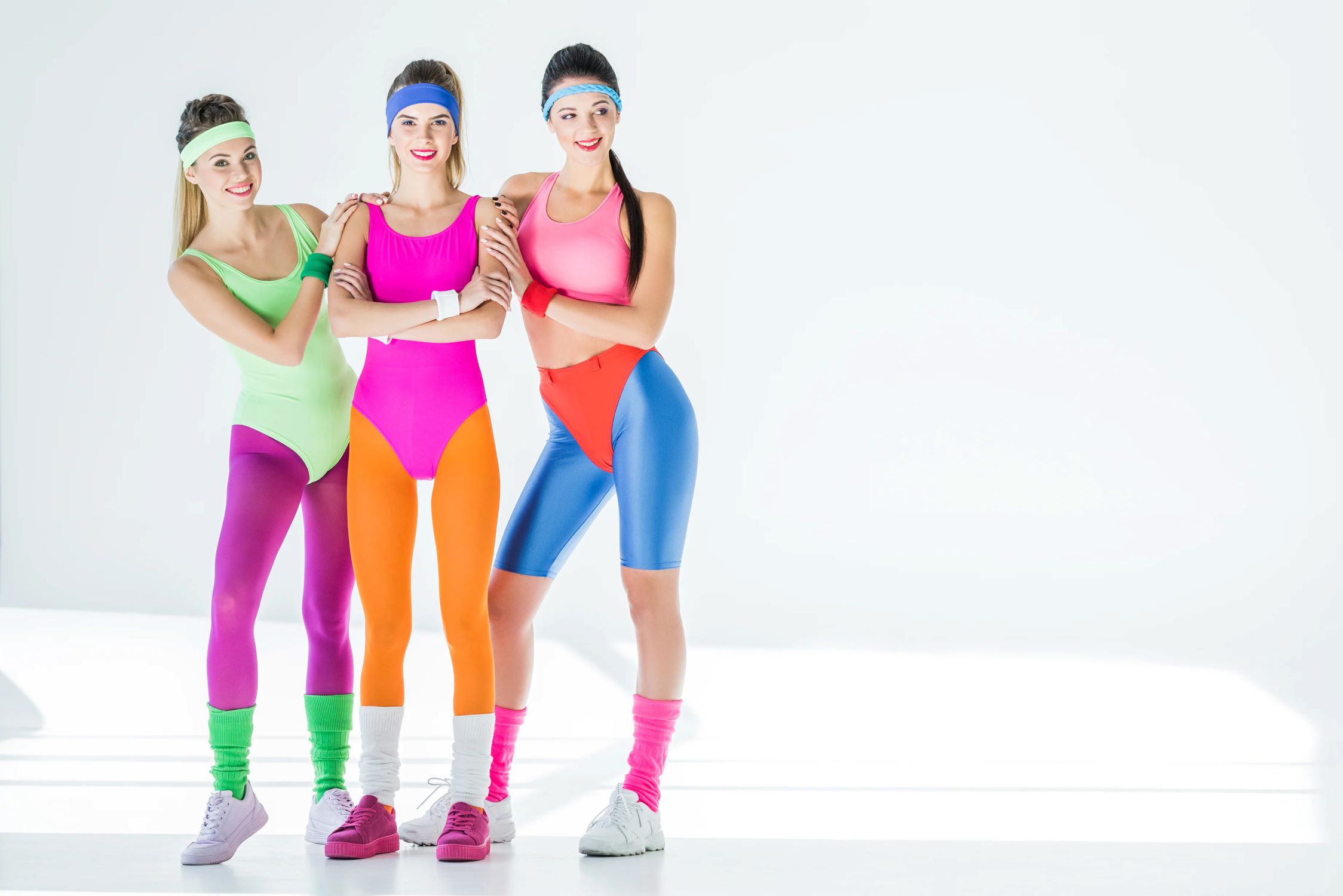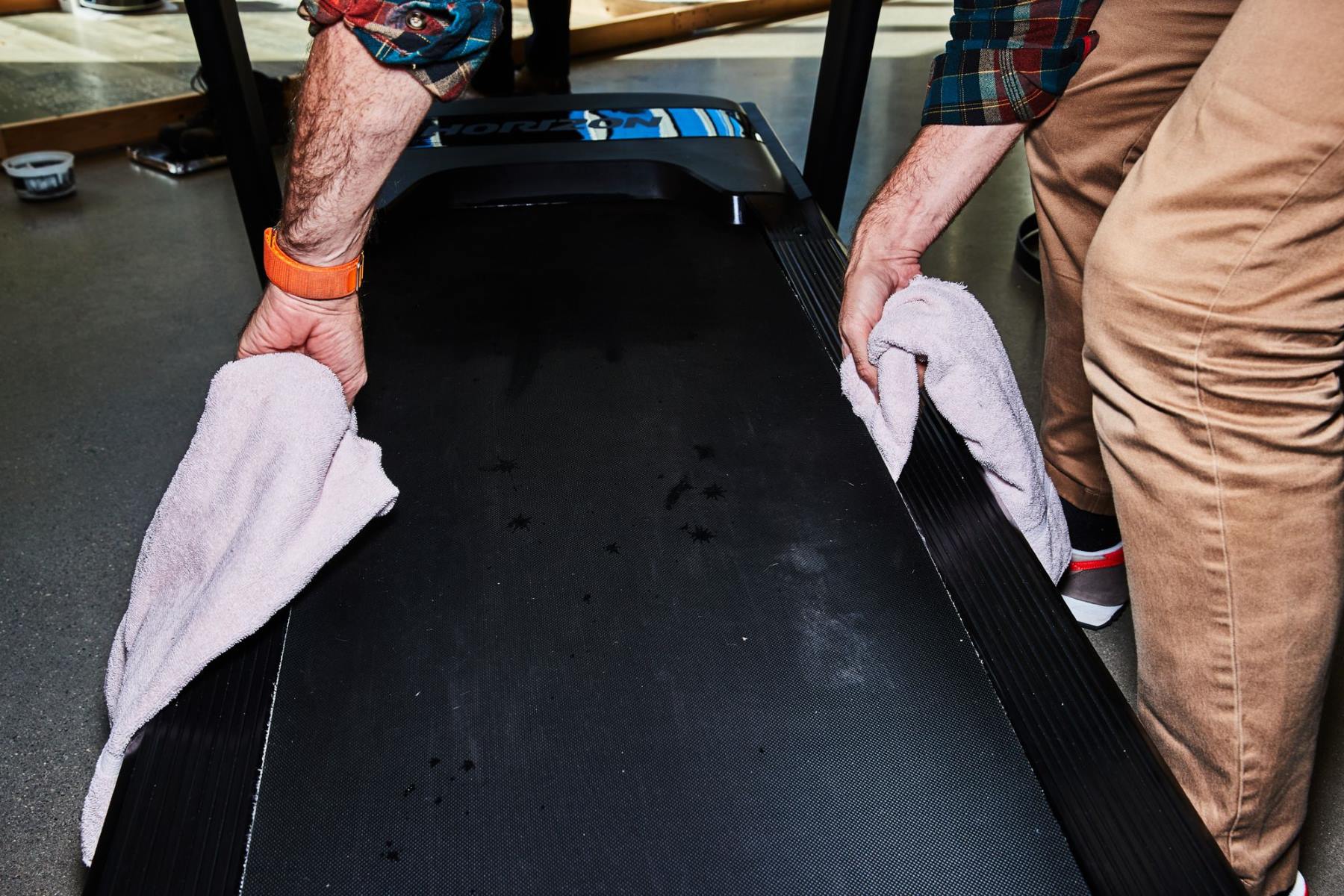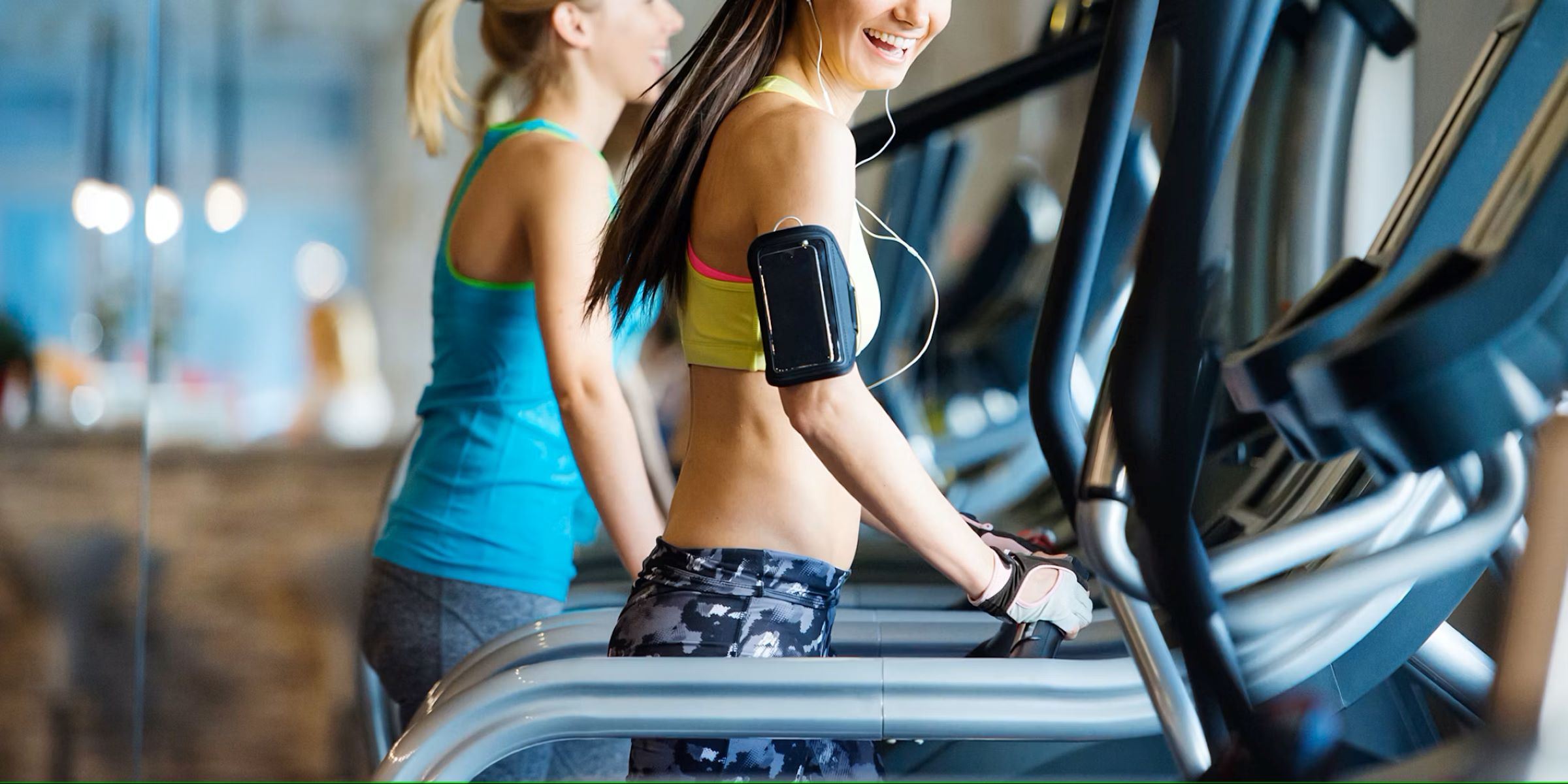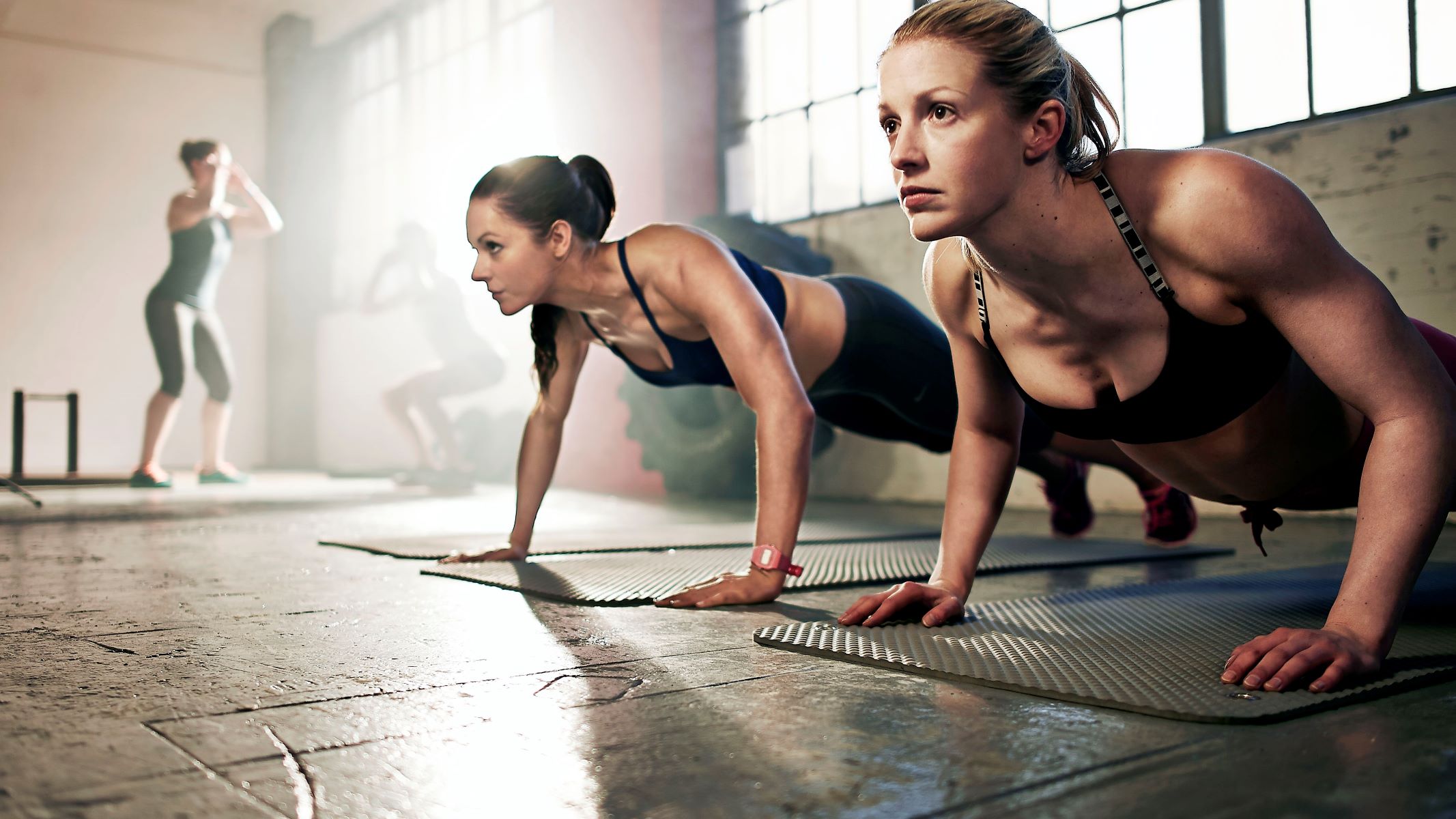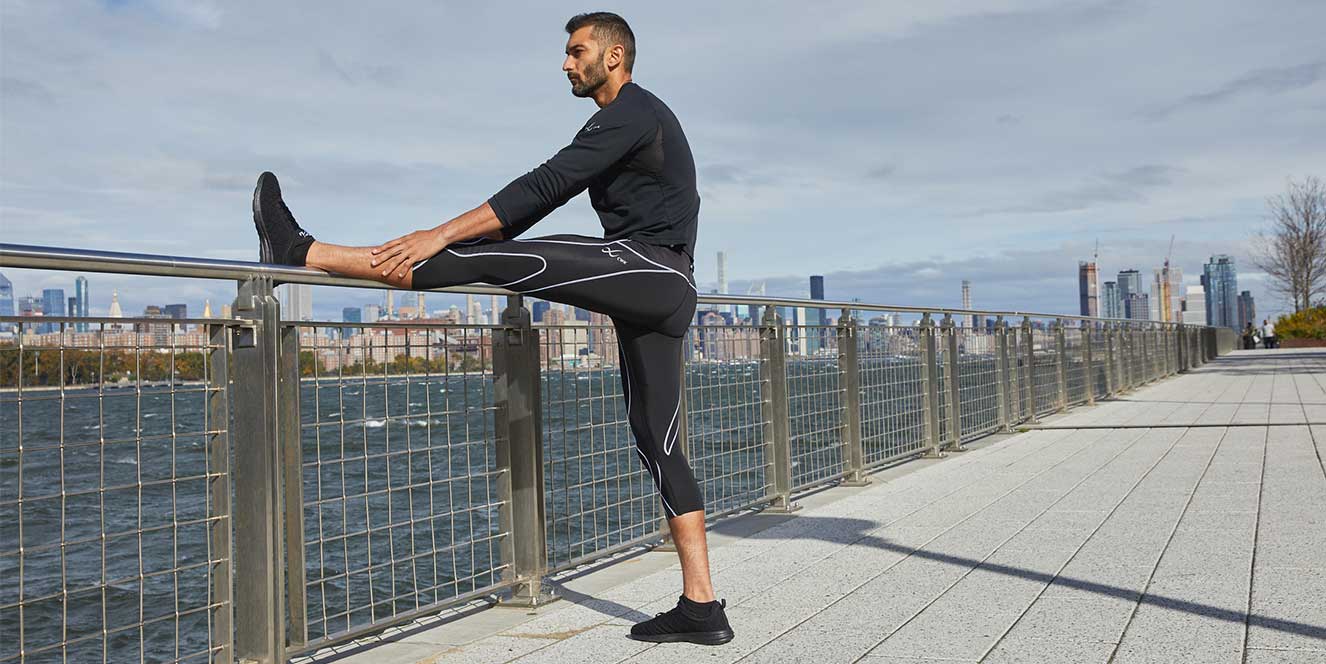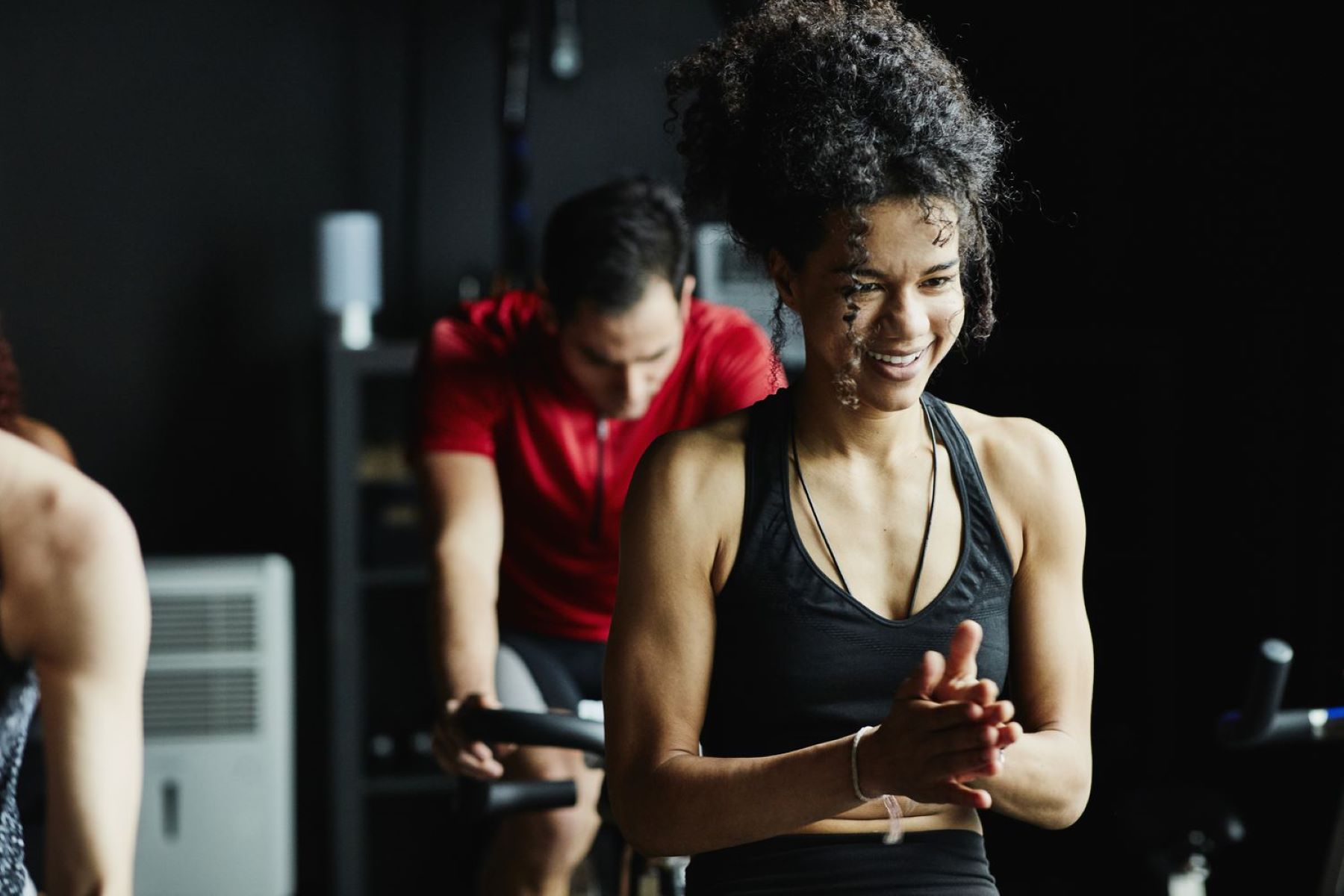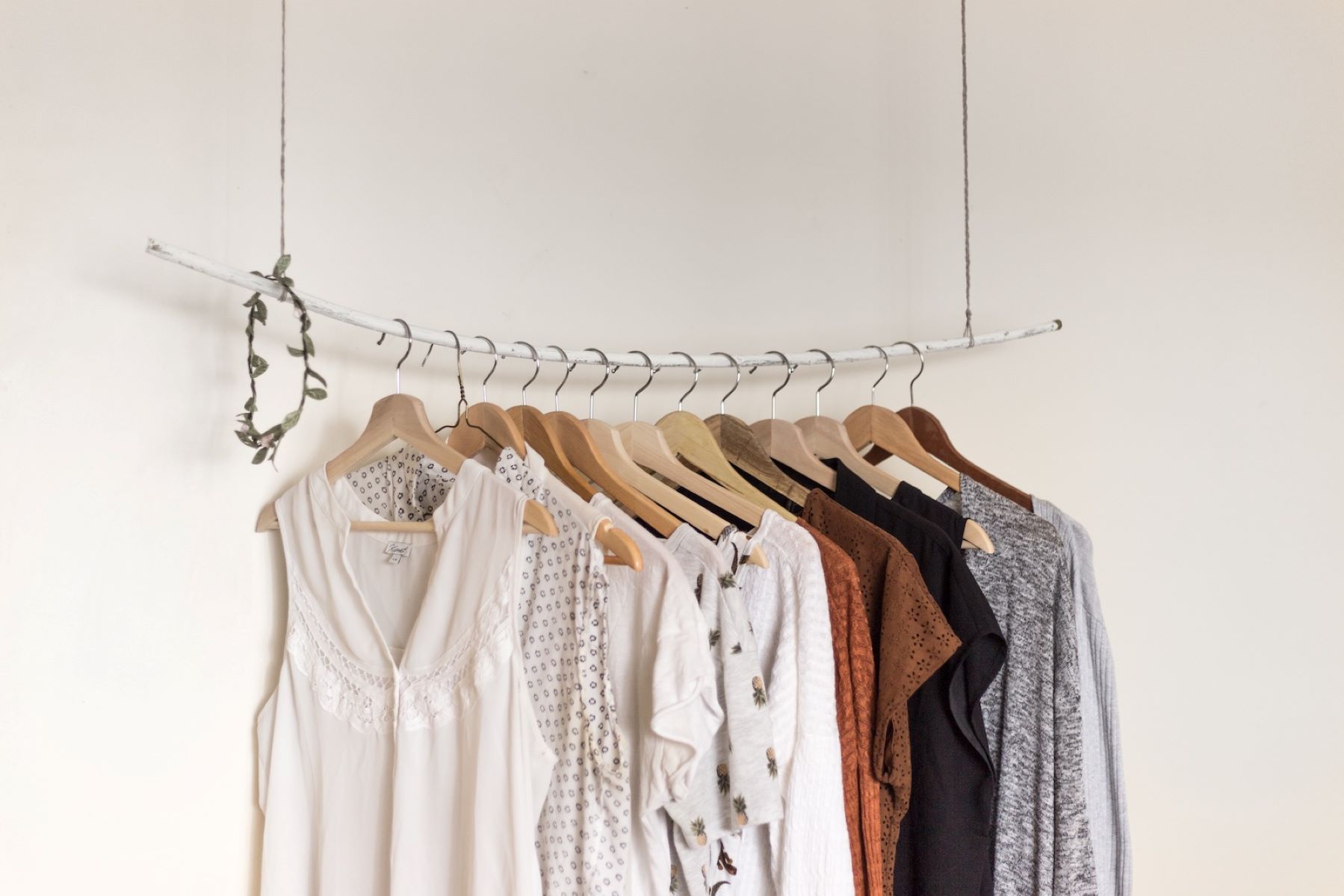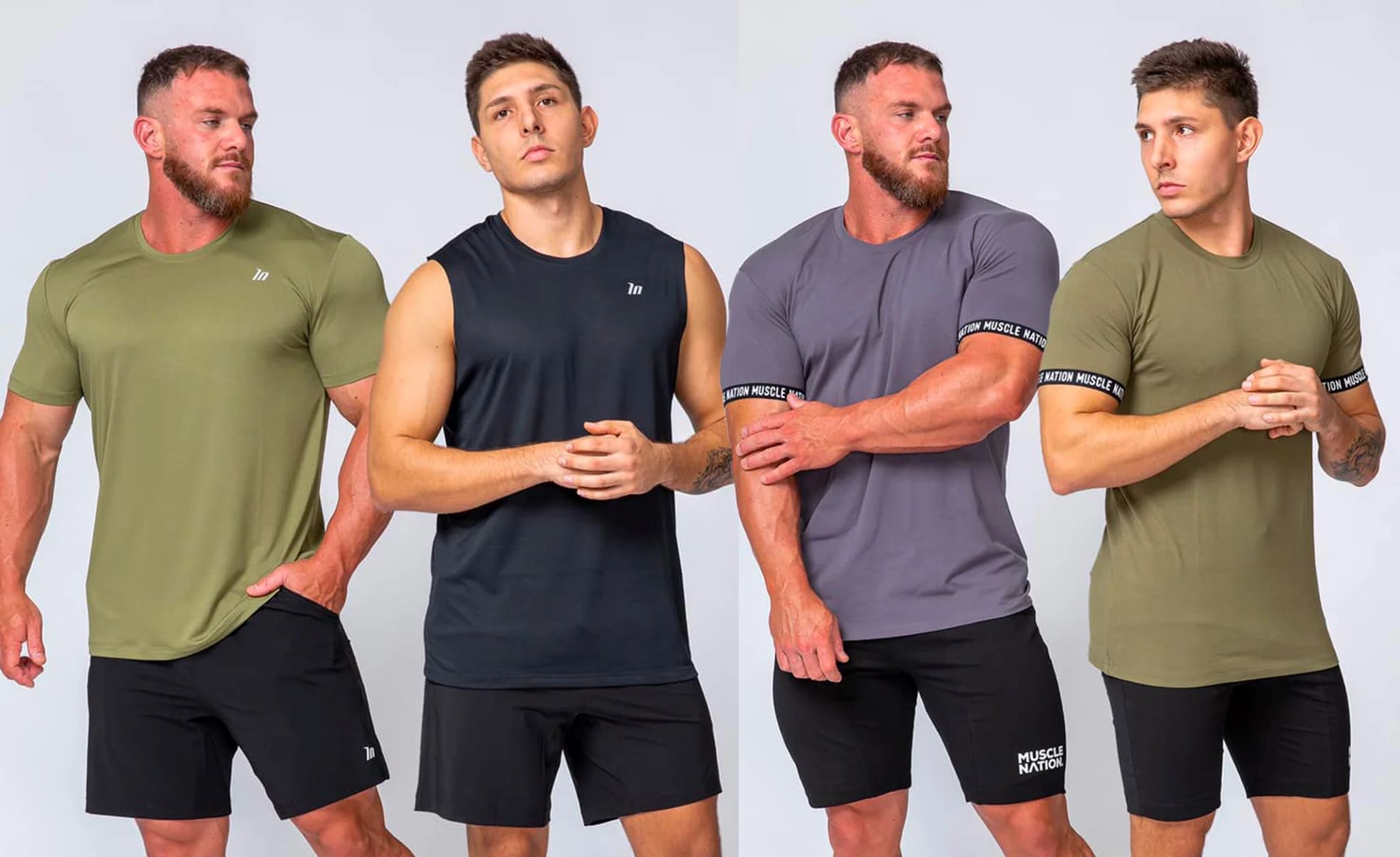

Featured
How To Wear Workout Clothes
Modified: January 2, 2024
Discover the latest trends in workout clothes and learn the best ways to style them with our featured collection. Stay stylish and comfortable during your workouts!
Introduction
When it comes to working out, having the right workout clothes can make a world of difference. Not only do they contribute to your overall comfort and performance, but they can also help you feel motivated and confident as you push your limits. However, with so many options available, it can be overwhelming to know where to start and what to look for in workout attire.
In this article, we will guide you through choosing the right workout clothes that suit your needs, preferences, and activities. We’ll explore the top considerations when selecting workout attire, such as comfort, flexibility, moisture-wicking properties, and more. Additionally, we will delve into the importance of proper fit and how it impacts your performance during exercise.
Furthermore, we’ll discuss layering techniques to adapt to different weather conditions, ensuring you stay comfortable and protected no matter the elements. Understanding the various fabric options for workout clothes is also crucial, as different materials offer different benefits depending on the activity you engage in.
While functionality is key, that doesn’t mean you have to compromise on style. We’ll provide you with different styling tips, so you can feel confident and fashionable while working out. Finally, caring for your workout clothes is essential to ensure their longevity and performance.
So, whether you’re a seasoned fitness enthusiast or just starting your fitness journey, this article will help you navigate the world of workout clothes and make informed choices that will enhance your performance and make your workouts even more enjoyable.
Choosing the Right Workout Clothes
Choosing the right workout clothes is important for both comfort and performance. Here are some key factors to consider when selecting your workout attire:
1. Comfort: Opt for clothes that feel comfortable against your skin. Look for soft, breathable materials that allow for freedom of movement. Avoid clothing that is too tight or restricts your range of motion.
2. Flexibility: Your workout clothes should be stretchy and flexible, allowing you to move without feeling restricted. Look for materials that have a good amount of elasticity, such as spandex or Lycra blends.
3. Moisture-wicking properties: When you exercise, you’re bound to work up a sweat. Choose workout clothes with moisture-wicking properties to help keep you dry and comfortable. These fabrics draw sweat away from your body and allow it to evaporate, preventing you from feeling damp and sticky.
4. Breathability: Look for workout clothes that are breathable and allow air to circulate. This helps to regulate your body temperature and prevent overheating during intense workouts. Fabrics like cotton, bamboo, or mesh panels are great options for breathability.
5. Durability: Invest in workout clothes that are built to last. Choose high-quality fabrics and well-constructed garments that can withstand frequent wear and washing. This ensures that your workout clothes will hold up over time and maintain their performance properties.
6. Style and design: While comfort and functionality are the main considerations, there’s no reason why your workout clothes can’t also be stylish. Choose colors and designs that make you feel motivated and confident. Whether it’s bold patterns or sleek monochromatic looks, find workout clothes that reflect your personal style.
7. Activity-specific clothing: Consider the specific activities you’ll be engaging in. Different types of workouts may require different clothing options. For example, if you’re doing high-impact activities like running or HIIT, opt for supportive sports bras and moisture-wicking shorts or leggings. If you’re practicing yoga, choose clothes that allow for ease of movement and flexibility.
By considering these factors, you can ensure that you choose workout clothes that not only meet your functional needs but also make you feel comfortable and confident as you exercise.
Top Considerations for Workout Clothes
When it comes to selecting workout clothes, there are several key considerations to keep in mind. These factors will help you make informed choices that enhance your performance and overall workout experience:
1. Comfort: Comfort should be your top priority when choosing workout clothes. Opt for materials that feel soft against your skin and provide a comfortable fit. Avoid any clothing items that may cause chafing or discomfort during movement.
2. Flexibility: Flexibility is crucial for allowing a full range of motion during exercise. Look for clothes that have stretchy fabrics or incorporate features such as mesh panels or strategic cutouts that enhance flexibility and mobility.
3. Functionality: Consider the specific functionality you need for your workout. For example, if you’re a runner, look for moisture-wicking fabrics to keep you dry or reflective details for visibility in low-light conditions. If you practice yoga, choose clothes with a good stretch and that will stay in place during various poses.
4. Breathability: Proper ventilation is essential to prevent excessive sweating and overheating during workouts. Look for fabrics that are breathable and allow air circulation, such as moisture-wicking materials or those with mesh panels.
5. Support: Depending on the intensity of your workouts, you may require additional support in certain areas. Sports bras with adequate support and compression leggings can help minimize discomfort and provide the necessary support for high-impact activities.
6. Durability: Workout clothes go through a lot of wear and tear, so it’s important to choose durable options that will withstand repeated use and washing. Look for well-constructed seams and fabrics that resist pilling or fading over time.
7. Size and fit: Proper fit is critical for both comfort and functionality. Avoid clothes that are too tight or restrictive, as they can impede your movement. Conversely, avoid clothes that are too loose, as they can be cumbersome and uncomfortable during exercise. Take measurements and consult the sizing charts provided by the brand to ensure you find the right fit for your body.
8. Style and confidence: While practicality is key, it’s also important to feel confident and motivated in your workout clothes. Choose colors, patterns, and designs that align with your personal style. When you feel good about how you look, it can boost your overall performance and enjoyment of your workout.
By considering these top factors when selecting workout clothes, you’ll be able to make informed choices and find the perfect attire that enhances your comfort, performance, and confidence during exercise.
Workout Clothes for Different Activities
When it comes to choosing workout clothes, it’s important to consider the specific activities you’ll be engaging in. Different workouts have different requirements, so here are some guidelines for selecting the right attire:
1. Running/Jogging: For running or jogging, opt for lightweight, breathable materials that wick away sweat. Look for moisture-wicking tops, supportive sports bras, and shorts or leggings with a comfortable waistband. In colder weather, layer up with a lightweight jacket or long-sleeve shirt.
2. Yoga/Pilates: Yoga and Pilates involve a lot of stretching and bending, so flexibility is key. Choose stretchy fabrics that allow for a full range of motion, such as leggings or yoga pants. Look for tops with built-in bras or choose a supportive sports bra. Opt for clothes that are not too loose to avoid interference during poses.
3. High-Intensity Interval Training (HIIT): HIIT workouts are intense and often involve a combination of cardio and strength exercises. Choose moisture-wicking fabrics that keep you cool and dry. Look for supportive sports bras, leggings or shorts with good coverage, and tops that allow for a wide range of movement.
4. Cycling: For cycling, consider moisture-wicking clothing to keep you dry and comfortable during long rides. Padded cycling shorts provide extra cushioning and reduce friction. Wear form-fitting tops to decrease wind resistance and consider layering with a lightweight jacket for variable weather conditions.
5. Weightlifting/Strength Training: When weightlifting or engaging in strength training, choose clothes that allow freedom of movement. Opt for moisture-wicking fabrics to manage sweat. Consider shorts or leggings with a secure waistband and tops that provide ease of movement for various exercises. Additionally, wrist wraps and lifting gloves can provide added support and protection.
6. Dance/Cardio Classes: For dance or cardio classes, prioritize clothes that are lightweight and breathable. Choose clothes with a good amount of stretch to allow for fluid movements. Consider form-fitting leggings or shorts, supportive sports bras, and tops that won’t get in the way during dynamic movements.
7. Outdoor Activities: If you enjoy outdoor activities like hiking or trail running, dress appropriately for the weather. Layering is key to adjust to temperature changes. Choose moisture-wicking fabrics for comfort and protection from the elements, and don’t forget to wear a hat, sunglasses, and sunscreen.
By selecting workout clothes tailored to the specific activity you’ll be doing, you can optimize your performance, comfort, and overall enjoyment of the workout.
The Importance of Proper Fit
When it comes to workout clothes, proper fit is crucial for both comfort and performance. Here’s why finding the right fit is important:
1. Comfort: Clothing that fits properly allows for ease of movement and enhances overall comfort during workouts. Ill-fitting clothes can restrict your range of motion, cause chafing, or create discomfort. When your workout clothes fit well, you can focus on your exercises without distractions.
2. Range of Motion: Properly fitting workout clothes ensure that you have the freedom and flexibility to move without hindrance. Whether you’re stretching, squatting, or running, having clothing that allows for a full range of motion is essential for executing movements correctly and minimizing the risk of injury.
3. Confidence: Wearing workout clothes that fit well can boost your confidence and motivation to exercise. When you feel comfortable and confident in your attire, you’re more likely to push yourself and perform at your best. Properly fitting clothes can help you feel more secure and supported during your workouts.
4. Support and Protection: Proper fit is especially important when it comes to supportive garments like sports bras. A well-fitting sports bra can provide the necessary support, reducing breast discomfort and potential damage to the ligaments. Similarly, properly fitted shoes and socks can help protect your feet and reduce the risk of blisters or other foot-related issues.
5. Performance: The right fit can significantly impact your performance during workouts. Clothes that are too loose may get caught on equipment or restrict your movements, affecting your performance. Tight clothes, on the other hand, can restrict blood flow and hinder your ability to move freely. Finding the right fit ensures that your clothing works with you, rather than against you, as you strive for your fitness goals.
6. Posture and Alignment: Properly fitting workout clothes can help improve your posture and alignment during exercises. For example, compression leggings or shorts can provide support to key muscle groups, promoting better body alignment and stability. This not only improves your form but also reduces the risk of injury.
Remember to consult sizing charts and take accurate measurements to find the right fit for your body. Each brand may have slightly different sizing, so it’s essential to refer to their specific guidelines.
By prioritizing proper fit when choosing your workout clothes, you can enhance your comfort, performance, and overall workout experience.
Layering for Different Weather Conditions
When it comes to working out in different weather conditions, layering your workout clothes is essential to stay comfortable and protected. By layering strategically, you can adjust your clothing to meet temperature changes and ensure optimal performance. Here’s how to layer for various weather conditions:
1. Cold Weather: In colder temperatures, layering is key to staying warm without getting overheated. Start with a moisture-wicking base layer that fits snugly against your skin. This layer will help wick away sweat and keep you dry. Next, add an insulating mid-layer, such as a fleece or thermal top, to provide warmth. Finally, top it off with a waterproof or windproof outer layer to shield you from the elements.
2. Hot Weather: In hot weather, focus on keeping cool and protected from the sun. Opt for lightweight, breathable fabrics that allow air circulation. Look for moisture-wicking tops and shorts or leggings that are designed to keep you dry. Consider wearing a lightweight, long-sleeved shirt made of UV-protective fabric to shield your skin from the sun’s rays. Don’t forget a hat and sunglasses for additional sun protection.
3. Transitional Weather: During transitional weather, when temperatures can fluctuate throughout the day, layering is key. Start with a moisture-wicking base layer and add a lightweight, breathable mid-layer for insulation. Choose materials that can easily be removed and tied around your waist or stashed in a small bag as temperatures rise. Opt for a versatile outer layer, such as a lightweight jacket or vest, that can be easily taken off or put on as needed.
4. Rainy Weather: When facing rainy conditions, choose waterproof or water-resistant materials to keep you dry. Look for jackets with sealed seams and adjustable hoods to protect you from rain and wind. Consider wearing moisture-wicking base layers to help manage sweat. Adding a lightweight mid-layer can provide extra insulation while still allowing for breathability. Don’t forget waterproof or water-resistant pants and accessories like hats and gloves to complete your rain-ready ensemble.
5. Windy Weather: In windy conditions, layering becomes crucial to protect yourself from wind chill and maintain your body heat. Start with a moisture-wicking base layer and add a wind-resistant mid-layer, such as a softshell jacket or windbreaker. This layer should block the wind while still allowing for breathability. Consider adding a lightweight vest or fleece as an extra insulation layer. Don’t forget to protect your extremities with wind-resistant gloves and a hat.
Remember to consider your activity level and personal preferences when layering for different weather conditions. Adjustable features, such as zippered vents or removable sleeves, can provide added versatility to adapt to changing temperatures.
By layering strategically, you can ensure comfort, protection, and optimal performance during your workouts, regardless of the weather conditions.
Understanding Different Fabrics for Workout Clothes
Choosing the right fabric for your workout clothes is essential, as different materials offer different benefits and functionalities. Understanding the properties of various fabrics will help you make informed decisions when selecting your workout attire. Here are some common fabric options:
1. Cotton: Cotton is a popular choice for workout clothes due to its softness and breathability. It is a natural fiber that absorbs moisture, keeping you comfortable during low-intensity activities or lighter workouts. However, cotton can become heavy and damp with sweat, taking longer to dry compared to synthetic fabrics.
2. Polyester: Polyester is a synthetic fabric known for its durability and moisture-wicking properties. It is lightweight, quick-drying, and has excellent moisture management capabilities, making it suitable for high-intensity workouts or activities that involve a lot of sweating. Polyester is also resistant to shrinking, stretching, and wrinkles, making it a long-lasting choice for workout clothes.
3. Nylon: Nylon is another synthetic fabric commonly used in workout clothes. It is known for its strength and excellent stretchability, allowing for a full range of motion during exercises. Nylon is also moisture-wicking and quick-drying, making it suitable for intense workouts. Additionally, it is resistant to abrasion and tear, making nylon garments durable and long-lasting.
4. Spandex: Spandex, also known as elastane or Lycra, is a highly elastic synthetic fabric that provides exceptional stretch and recovery. It is often blended with other fabrics to add flexibility and shape retention to workout clothes. Spandex allows for a snug fit and enhances freedom of movement during exercises. It is commonly used in leggings, sports bras, and other form-fitting workout apparel.
5. Bamboo: Bamboo fabric is a sustainable and eco-friendly choice for workout clothes. It is soft, hypoallergenic, and offers excellent breathability. Bamboo fabric has natural moisture-wicking properties, helping to keep you cool and dry during workouts. It is also odor-resistant and provides UV protection, making it a popular option for those who prioritize sustainability and comfort.
6. Mesh: Mesh is a fabric with an open weave or perforated pattern that provides enhanced breathability and ventilation. It is often used in the design of panels or inserts in workout clothes to improve airflow and regulate body temperature during intense workouts. Mesh fabric allows heat and moisture to escape, making it ideal for activities where breathability is a priority, such as running or high-intensity training.
When considering fabric options for workout clothes, keep in mind the type of activity, the climate you’ll be exercising in, and your personal preferences. Each fabric has its own set of advantages, and selecting the right one for your needs will ensure comfort, performance, and durability during your workouts.
Styling Tips for Workout Clothes
Who says workout clothes can’t be stylish? With a little creativity, you can look fashionable and put-together even when you’re hitting the gym or going for a run. Here are some styling tips to help you elevate your workout attire:
1. Mix and Match: Don’t be afraid to mix and match different colors and patterns. Opt for vibrant leggings paired with a neutral top or vice versa. Experiment with color-blocking or try patterned leggings with a solid-colored tank. Mixing and matching adds visual interest to your outfit and allows you to express your personal style.
2. Layering: Layering isn’t just functional – it can also add style to your workout outfit. Pair a fitted tank or sports bra with a loose, lightweight hoodie or a cropped sweatshirt. Tie a knot at the waist of an oversized shirt or wear a longline sports bra under a sheer tank for a layered look that’s both trendy and practical.
3. Play with Lengths: Opt for workout clothes with different lengths to create dimension and visual appeal. Pair high-waisted leggings with a cropped top for a flattering silhouette. Try a longer tunic or a flowing tank over fitted shorts or leggings for a relaxed and on-trend look.
4. Invest in Quality Basics: Building a collection of high-quality workout basics is key to creating stylish outfits that will stand the test of time. Invest in well-fitting leggings, sports bras, and tops in neutral colors like black, gray, or navy. These versatile pieces can be easily mixed and matched with more statement-making items.
5. Accessorize: Add some flair to your workout outfit with accessories. Consider wearing a headband, a stylish baseball cap, or a trendy scrunchie to keep your hair in place. Don’t forget about functional accessories like a water bottle holder or a sweat-absorbing wristband. A stylish gym bag or a chic backpack can also complete your workout ensemble.
6. Dress Up Your Athleisure: Athleisure is a popular trend that allows you to seamlessly transition from workout to everyday activities. Dress up your workout leggings with a longline cardigan and ankle boots or pair your sports bra with a flowy skirt and sneakers. Mixing athletic pieces with casual or dressier items creates a stylish and effortless look.
7. Choose Fit and Flattering Styles: Opt for workout clothes that fit and flatter your body shape. Look for seams, patterns, or cuts that accentuate your curves or highlight your favorite features. Feeling confident in your workout clothes can boost your motivation and make you feel stylish and comfortable while exercising.
Remember, the most important thing is to wear what makes you feel good. When you’re comfortable and confident in your workout attire, you’ll be ready to tackle any fitness challenge and look fabulous doing it.
Caring for Your Workout Clothes
Caring for your workout clothes properly is essential to ensure their longevity, performance, and hygiene. Here are some tips to help you take care of your workout attire:
1. Read and Follow Care Instructions: Always read the care instructions on the garment’s label before washing or drying. Different fabrics and blends may have specific requirements. Follow the instructions regarding temperature, washing method (machine or hand wash), and whether it’s safe to tumble dry or requires air drying.
2. Wash Promptly: Don’t let sweaty workout clothes sit for too long before washing them. The longer they linger, the more likely those odors and stains can set in. Wash them as soon as possible after use to prevent the buildup of bacteria and oils.
3. Separate Colors: To prevent color bleeding and maintain the vibrancy of your workout clothes, separate bright or dark-colored garments from lighter ones when washing. Consider using color-catching sheets to absorb any color bleed.
4. Use Gentle Cycle and Cold Water: To preserve the quality and elasticity of your workout clothes, opt for a gentle cycle and use cold water. Hot water can damage the fibers and cause shrinkage. If the garment is particularly dirty, pre-treat the stains before washing.
5. Avoid Fabric Softeners: Fabric softeners can leave a residue on workout clothes, diminishing their moisture-wicking properties. Instead, use a mild detergent specifically formulated for activewear. If your clothes develop a stubborn odor, consider using a sport-specific laundry additive to neutralize it.
6. Air Dry: Whenever possible, air drying is the best option for workout clothes. Hang them or lay them flat to dry, preferably in a well-ventilated area. Avoid direct sunlight, as this can cause fading. Hanging workout clothes upside down can help maintain their shape and prevent stretching.
7. Store Properly: After washing and drying, fold or hang your workout clothes in a clean and well-ventilated space. Avoid leaving them in gym bags or damp areas, as this can promote the growth of mold and bacteria. Proper storage helps maintain their freshness and extends their lifespan.
8. Avoid Ironing: Most workout clothes are designed to be wrinkle-resistant, so ironing is typically unnecessary and can damage the fabric. If needed, lightly steam them or hang them in the bathroom while taking a hot shower to remove any wrinkles.
9. Replace Worn-Out Items: Over time, workout clothes will show signs of wear and lose their performance qualities, such as elasticity and moisture-wicking capabilities. When you notice excessive pilling, stretched-out fabric, or a lack of support, it’s time to replace those items to maintain optimal performance and comfort.
By following these care tips, you can extend the lifespan of your workout clothes, maintain their performance capabilities, and ensure that they stay fresh and comfortable for your future workouts.
Conclusion
Choosing the right workout clothes is essential for a comfortable, efficient, and stylish exercise experience. By considering factors like comfort, flexibility, moisture-wicking properties, and functionality when selecting your workout attire, you can optimize your performance and enjoyment during workouts. Additionally, understanding the importance of proper fit, layering for different weather conditions, and selecting the right fabrics further enhances your workout experience.
Properly caring for your workout clothes ensures their longevity, performance, and hygiene. Following care instructions, washing promptly, separating colors, using gentle cycles and cold water, and air drying are all important steps in maintaining the quality of your workout attire.
Furthermore, don’t forget to explore your personal style with workout clothes. Mixing and matching, layering, dressing up your athleisure, and accessorizing can help you feel confident and motivated during your workouts.
In the end, investing in high-quality workout clothes that fit well, suit your activities, and reflect your personal style is a worthwhile decision. By prioritizing comfort, performance, and style, you can enhance your exercise routine, feel confident, and make the most out of every workout session.
